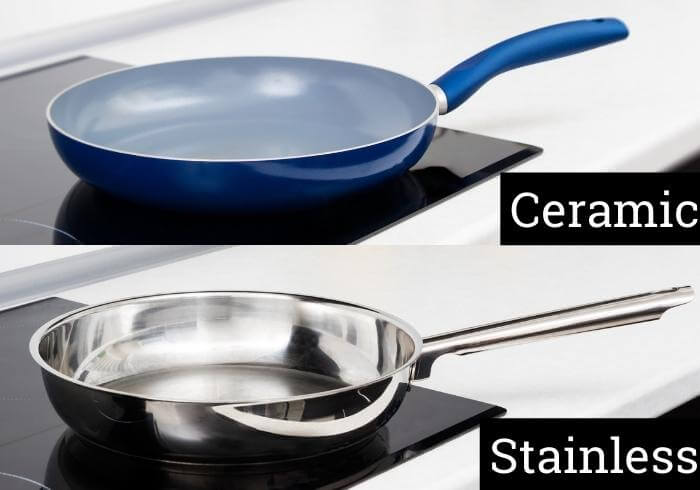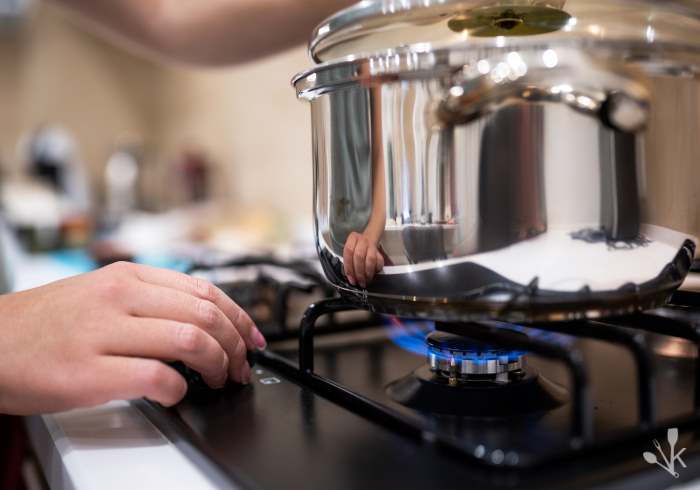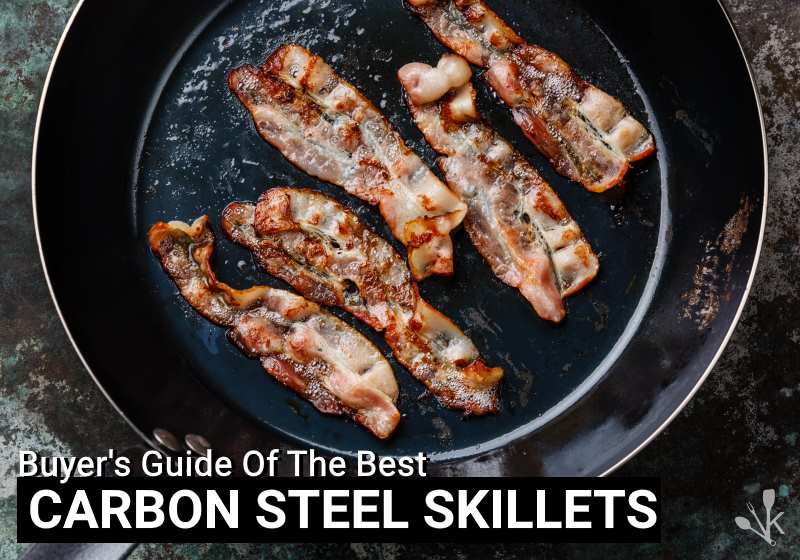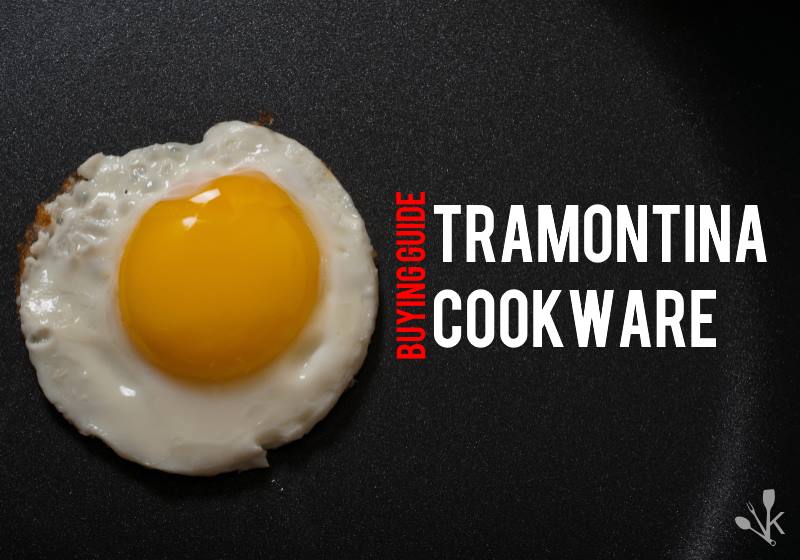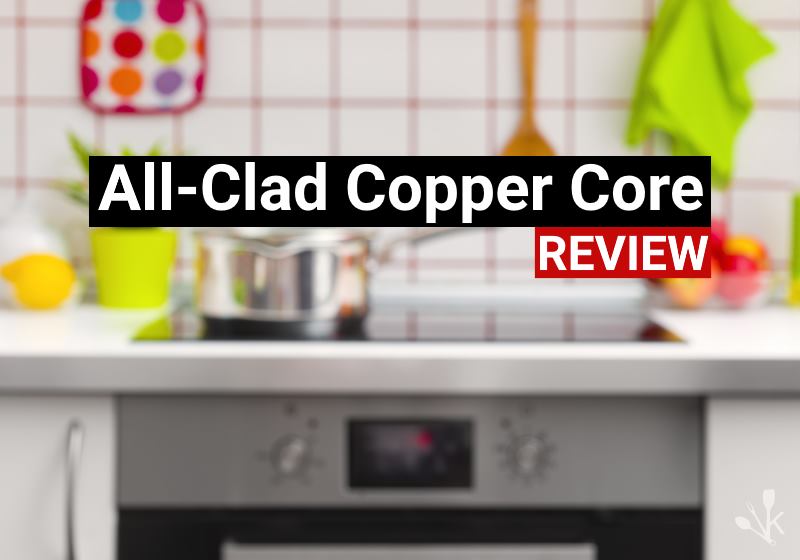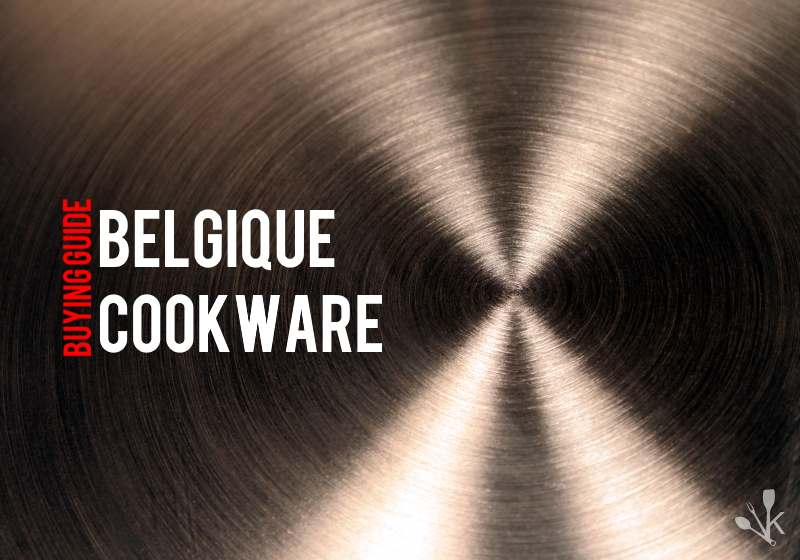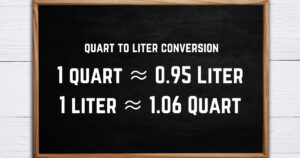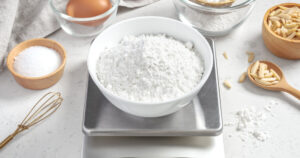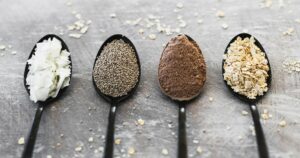I love cooking with ceramic and Teflon pans, but I’m often asked if one is better.
Now, I can sense the gears turning in your head. Ceramic and Teflon? Aren’t they just pans that prevent food from sticking? Oh, there’s so much more to it!
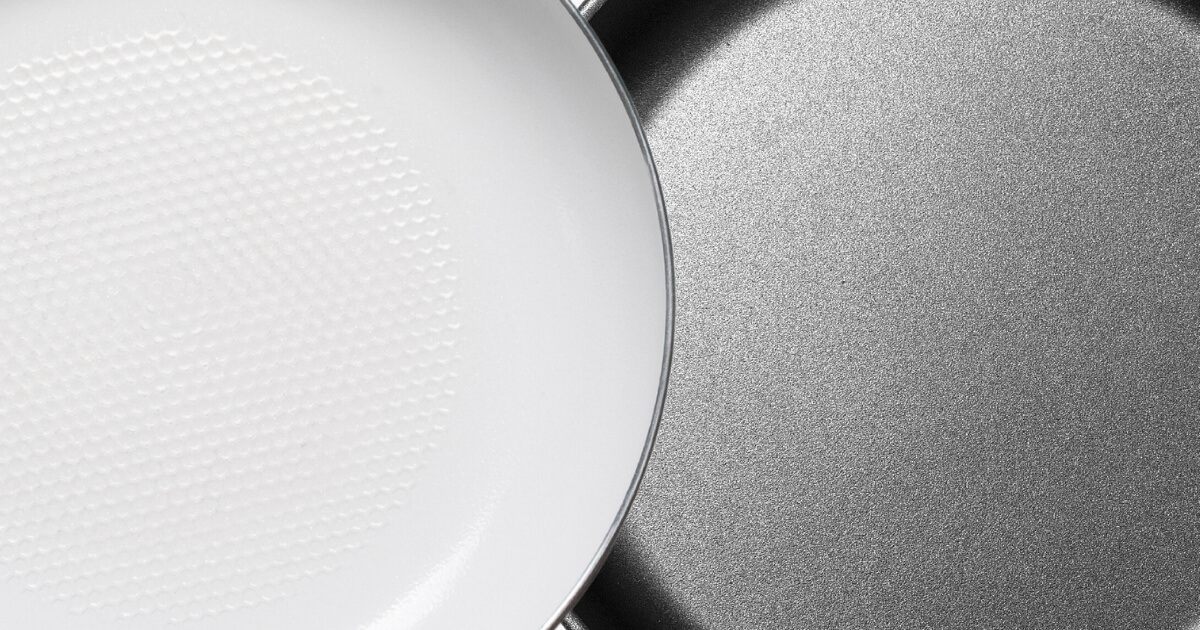
With the evolution of kitchenware technology and brands competing to offer the best, both have carved out their niche in the cookware market.
That’s where this deep dive comes into play. You’ll uncover the ins and outs of ceramic and Teflon, and by the end, you’ll know how to pick the perfect pan for your cooking adventures.
What They’re Made Of: Non-Stick Surfaces
Ceramic Coated Cookware
Most pans labeled “ceramic” are actually metal pans jazzed up with a ceramic-like coating.
This special touch gives the pan its non-stick properties to help keep your scrambled eggs or sautéed veggies from sticking with minimal fats added to the pan.
They’re a much more recent addition to the cookware world than Teflon, and they have several types that can confuse new buyers.
Teflon Cookware: The Basics
Ever wondered why the name “Teflon” rings a bell? It’s not just a fancy term for non-stick cookware. It’s a brand that stands for a specific type of non-stick coating known as PTFE.
This coating has been the go-to for many over the years and for a good reason. Whether you’re searing a piece of salmon or tossing together a quick stir-fry, a Teflon pan is like that trusty friend who never lets you down.
Making A Choice: Ceramic Or Teflon For Material?
If you’re after tried-and-true non-stick magic, Teflon is a solid pick.
Cooking Experience
Ceramic Cookware
When you’re using ceramic pans, you’ll notice the heat distribution is pretty even. This means you won’t have those pesky hot spots that can cause uneven cooking or even burning in some areas.
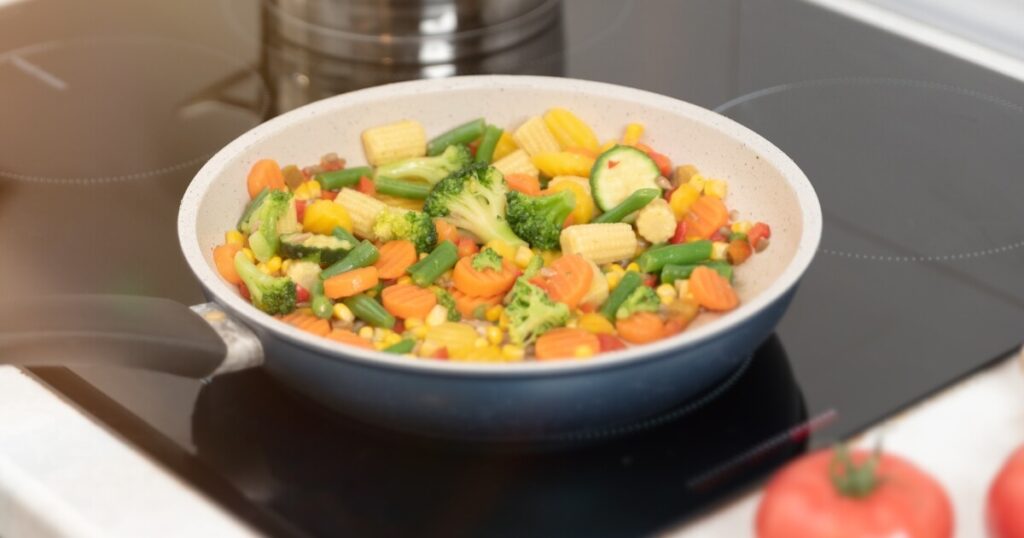
Ceramic pans start off as a dream with their non-stick surface. However, they can lose some of that non-stick charm over time and especially with the slightest misuse.
So I agree that it’s true that food tends to stick to ceramic a bit more than Teflon in this regard.
Teflon Cookware
Teflon pans have a knack for heating up quickly and heating evenly if the pan hasn’t been warped and your stovetop is level.
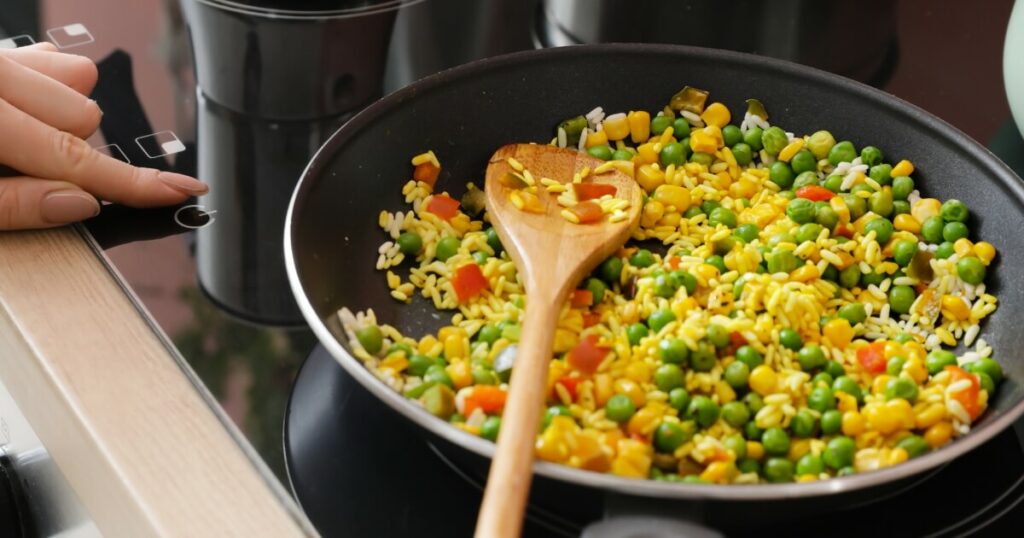
Teflon truly wears the crown when it comes to non-stick capabilities. Flipping pancakes or sliding an omelet onto a plate becomes a breeze.
Compared to ceramic, Teflon definitely has the upper hand in non-stick performance over time.
Cooking Food: Best Choices And Ones To Avoid
In terms of what to cook, both types follow similar guidelines.
Best For:
- Sautéing vegetables, eggs, pancakes, seafood, and delicate fish fillets that need a truly non-stick surface.
- Low to medium-heat cooking tasks
- Wood or Silicone Utensils
Avoid:
- Searing or cooking on high heat.
- Using metal utensils. They will scratch the surface.
- Cooking sprays because chemical compounds in the sprays will stick to the surface and ruin the pan’s non-stick properties.
- Moving from stovetop to oven or broiling. Many pans have parts such as silicone handles or non-stick coatings that can’t tolerate higher temperatures.
Making A Choice: Ceramic Or Teflon For Cooking?
When it comes to the actual cooking experience, both ceramic and Teflon are great options. But, if you’re all about that long-term non-stick experience, Teflon is hard to beat.
Durability And Maintenance
When it comes to cookware, durability, and maintenance go hand in hand. The way you care for your pans can significantly impact how long they last.
There’s nothing more frustrating than a pan that gives up on you too soon.
General Care
After cooking up a storm, always let your Teflon coated cookware or ceramic pans cool down slowly and completely before giving them a wash. This simple step can prevent warping and protect the non-stick coatings.
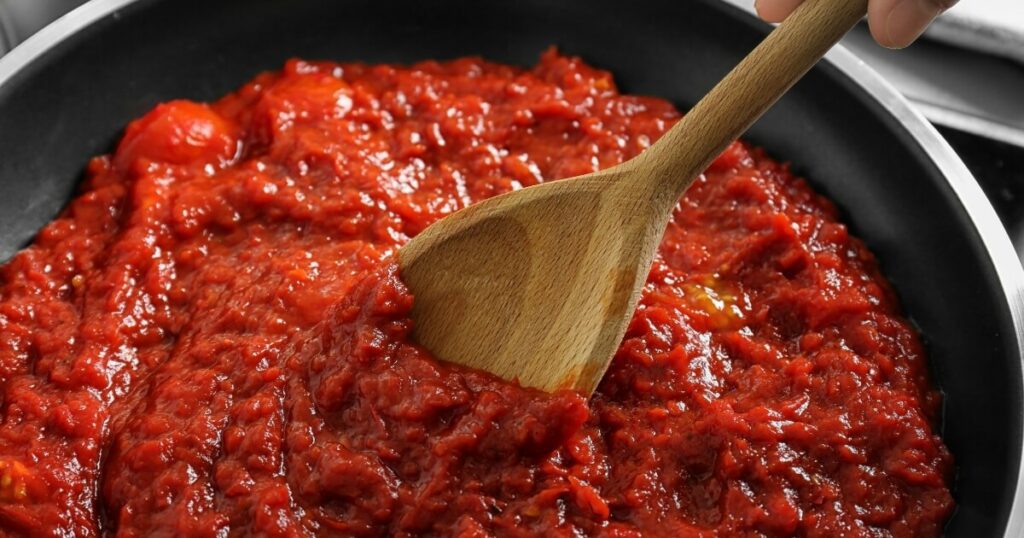
And both of these pans are non-reactive.
So, go ahead and whip up that tangy tomato sauce or lemony dressing. Your pans can handle the acidity without reacting or altering the taste.
Although, if you plan on cooking slowly over many hours, I always feel more comfortable using my favorite stainless steel cookware for those tasks.
When treated right, ceramic pans can be your kitchen companions for a good amount of time. However, they do have a bit of a fragile side.

A hard knock or drop can lead to chipping or even cracking. If you’re placing them in a dish rack after washing, it’s fairly easy to scratch them when other dishes are banging against the interior coating. So, handle it with care!
Again, Teflon pans are a bit more resilient but are still susceptible to the same damage.
Lifespan
While some ceramic pans claim a lifespan of up to 5 years, from personal experience, you might find that they last about two years with regular use and proper care. Even less if you accidentally scratch or damage them.
Teflon pans can also have a lifespan between 1 to 5 years. With good care and based on personal experience, you might get a solid three years for mid-range pans.
Cleaning
Cleaning both types of pans is usually a breeze in the beginning. Food remnants often slide right off.
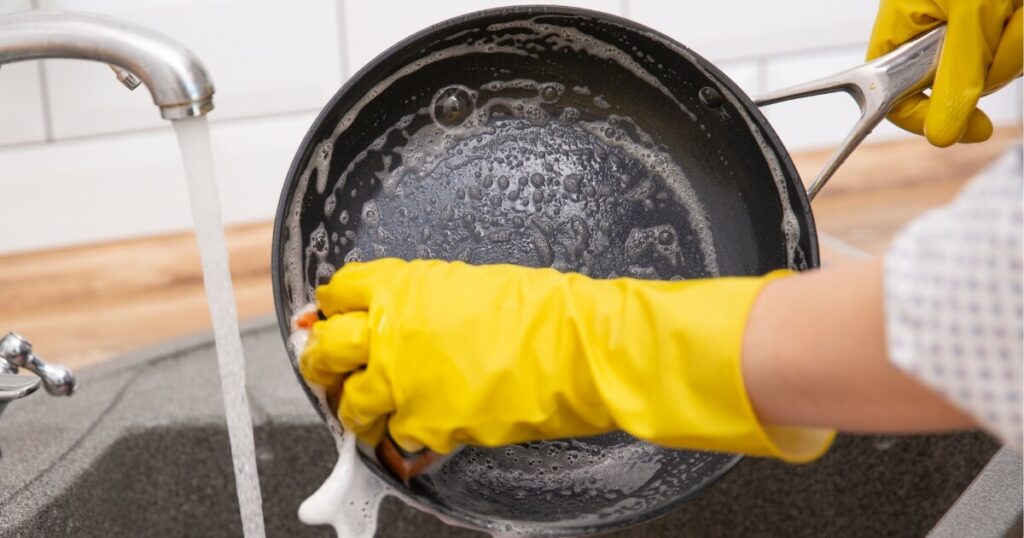
But remember, while they’re easy to clean, it’s best to avoid abrasive sponges, brushes, or steel wool that can scratch the surface. A soft cloth after a soak in hot water should do the trick.
Making A Choice: For Durability And Maintenance?
If you’re someone who’s a bit clumsy in the kitchen (it happens to the best of us!), you might want to lean toward Teflon since it’s less prone to chipping or cracking.
On the other hand, if you’re diligent about all of those aspects, ceramic could be a great fit. But people being people, I have to lean towards Teflon for most home cooks.
Safety And Health Concerns
While one of the selling points of ceramic-coated cookware is that it’s often marketed as PTFE-free and PFOA-free, there might still be concerns about the specific materials used in the coating.
Some cheaper cookware pieces might not have been manufactured under strict quality controls, leading to potential safety concerns.
This is especially problematic if you’re buying from online sellers that ship from overseas rather than in a local store or a reputable online seller who is more likely to be accountable for their offerings.
High-Temperature Concerns
Teflon pans have been a topic of discussion when it comes to safety, primarily because of PTFE. When exposed to extremely high temperatures, PTFE can release toxic fumes.
While these temperatures are higher than most everyday cooking scenarios, and most of the issues are eliminated at the time of manufacturing, it’s still a good idea to be cautious and avoid overheating your Teflon pans.
The PFOA Debate
Another point of contention has been PFOA, toxic chemicals used in processing PTFE, which was Teflon’s main ingredient. There have been many concerns about its potential health effects.
However, it’s worth noting that many manufacturers have moved away from using PFOA in recent years. So, buying a Teflon pan today should be PFOA-Free. If not, I recommend choosing a different brand.
With proper use, both ceramic and Teflon pans can be safe options for your kitchen.
Making A Choice: Ceramic Or Teflon For Safety?
I think this is a tie for safety. There is a lot of data, strict regulations, and changes to the manufacturing process to support the use of both types of cookware coatings. Remember, it’s all about informed decisions and using the cookware correctly.
Environmental Impact
Eco-Friendly Production
Ceramic coatings are often praised for their green credentials. The production process of ceramic coatings tends to have a lower environmental impact compared to other non-stick alternatives.
Is this always the case? Of course not. But it’s something to consider if that’s important to you.
The production of Teflon coatings has raised some environmental eyebrows over the years, as we’ve already covered.
Waste And Disposal
When it’s time to say goodbye to your ceramic pan, its environmental impact doesn’t end.
Both pans can often be sent to your local recycling company instead of to the landfill. You’ll need to check your local laws and guidelines to see how to do it properly.
If you just chuck your old pans in the trash, there’s potential for the coating to break down over time, which could release harmful chemicals into the environment, even if they are in small amounts.
Making A Choice: Ceramic Or Teflon For The Environment?
If leaving a smaller carbon footprint is high on your list, ceramic might be the better choice for you. Its more eco-friendly production process and lack of harmful chemicals give it an edge.
Price Point: Value For Money
You might notice that ceramic pans often come with a slightly heftier price tag. The reason? The materials and the process used to create that smooth, non-stick ceramic coating can drive up the cost.
Plus, with the growing demand for eco-friendly products, ceramic pans have become a sought-after item, and sometimes, that demand can influence the price.
While ceramic pans might require a bit more of an initial investment, think about the long-term benefits. You’re getting a pan that’s free from harmful chemicals and offers a unique cooking experience. If you’re someone who values those features, the extra bucks might feel worth it.
Teflon pans have been around for a while and are often the go-to, partly because of their affordability. Teflon’s production process and materials are more widely available, which often translates to lower costs for the consumer.
So, if you’re watching your budget or just starting to equip your kitchen, Teflon can be a wallet-friendly choice.
Keep in mind that not all pans are created equal. Some cheaper versions might wear out faster or not offer the same non-stick experience as a slightly pricier one.
So, while you might save initially, think about the potential cost of replacing the pan down the line.
Making A Choice: Ceramic Or Teflon For Your Budget?
When it comes to price, sometimes it’s worth spending a bit more for a product that’ll last longer and perform better. Think about your budget, but also consider the value you’re getting in return. So for those reasons, there is no clear winner here. It’s all about personal preference.
Final Thoughts: Is Ceramic Better Than Non-Stick?
It’s not so much a battle of superiority as it is a matter of preference. Both ceramic and Teflon bring something unique to the table.
Teflon’s Edge In The Kitchen
The last thing you want is your food sticking to the pan. That’s where Teflon shines. Its performance, especially its tougher non-stick surface, often gives it an edge over ceramic.
And when you factor in the price point, and the safety measures modern brands have adopted, it’s easy to see why many lean towards Teflon.
Brands like All-Clad, with their offerings like the All-Clad D3 Fry Pan Set, have set the bar high in the Teflon cookware game.
Ceramic’s Place In The Cookware World
With their even heat distribution and eco-friendly appeal, ceramic pans have carved out a special place in many kitchens.
They’re especially great for those who are environmentally conscious or those who prefer a more natural cooking surface.
And speaking of top-notch ceramic cookware, the GreenPan Valencia Pro Ceramic Frying Pan Set is a standout choice that many home cooks swear by.



